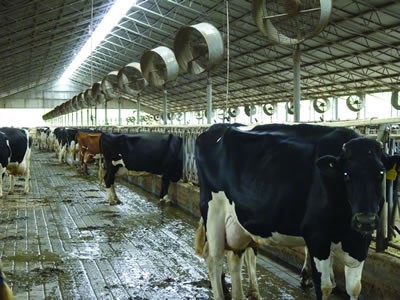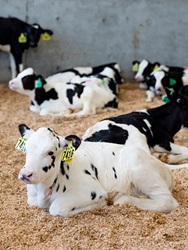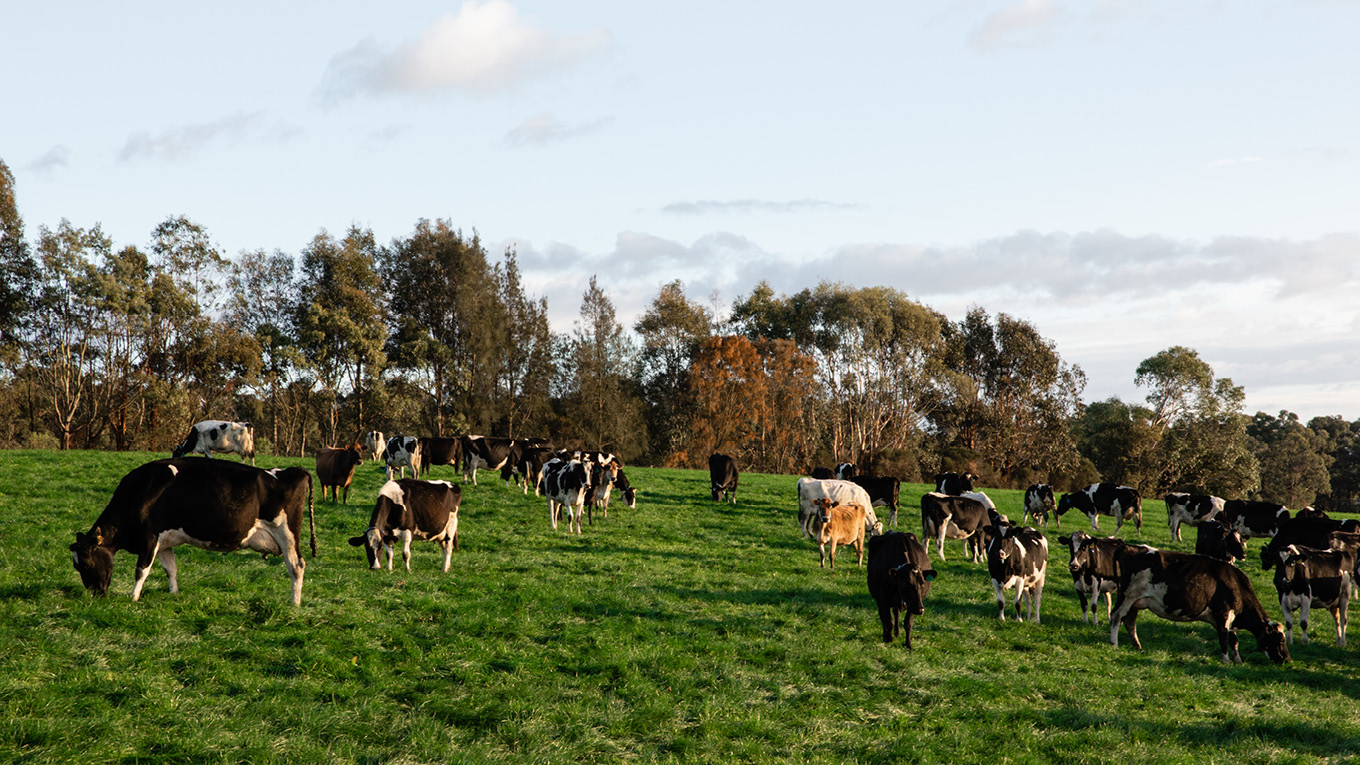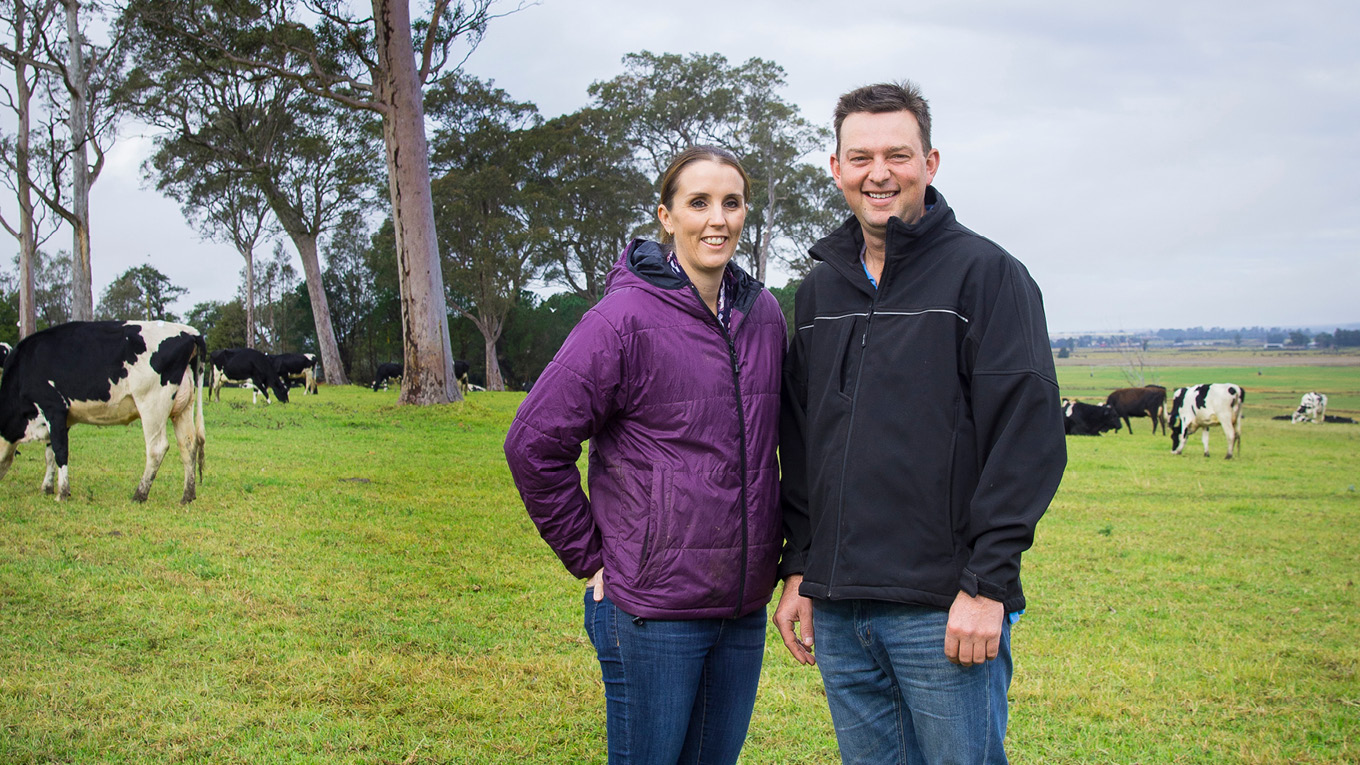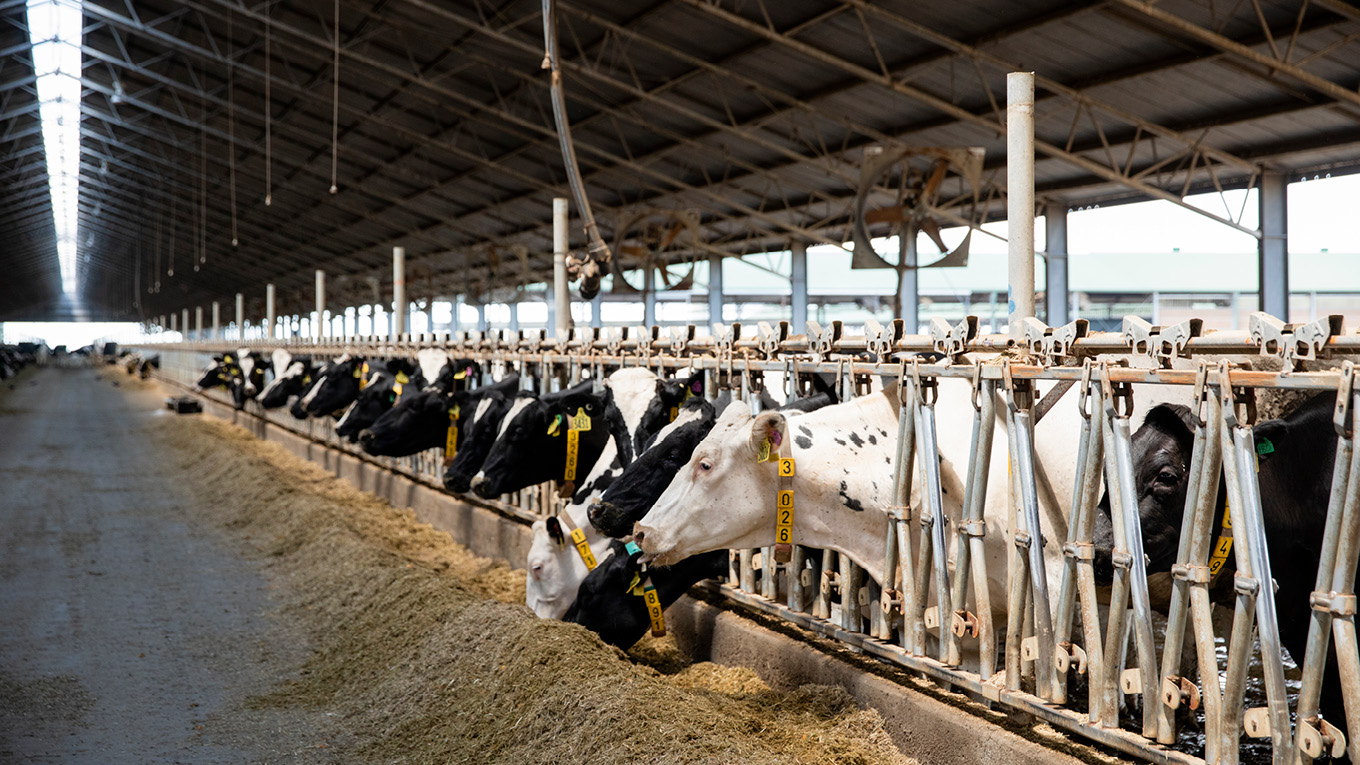Fan System Design
Ventilation should always be considered a priority in any infrastructure planning.
A pitched roof and open ridge vent should be considered before fans. Good facility design will create the most effective air movement. Fans will then help to increase this. Fans are designed to move warm air away from the cow as well as create air movement over the cow's skin to enhance evaporative cooling through sweating.
Sprinklers are a useful complement to fans, especially on days when there is little of no wind.
For more information on sprinklers go to Sprinklers.
Fan sizing, type and placement
|
Element |
Specifications |
|
Fan Cost |
$550 - $2,000 each |
|
Recommendations
|
|
|
Fan flow rate |
285 - 840 cubic meters / minute |
|
Recommendations Spacing is determined based on the fan's operating flow rate. As a guide:
|
|
Design considerations
- Ensure that fans used have the capacity to move the volume of air required at >2.0 m/second. If cows are tightly packed, airflow will need to be greater. When used in open spaces, larger-capacity fans are required because they are operating against static pressure, so their efficiency is lower.
- Doubling the operating capacity of the fan does not double the distance covered by the fan, but it will increase costs. Be prepared to modify the placement of fans and add additional or larger-capacity fans if required.
Seek professional advice from a registered engineer and/or manufacturer.
Fan orientation and pitch
|
Element |
Specification |
|
Fan Location |
Work with prevailing wind (Eg. Westerlies) |
|
Recommendations
|
|
|
Fan Pitch |
20-30 degrees |
|
Recommendations
|
|
Operational considerations
- When operated in conjunction with sprinklers, fans will usually be initiated first (i.e. start to operate at a lower temperature than sprinklers).
- Sprinkler on/off cycles can then be stepped up at different temperature trigger levels
- If fans are in the dairy they should run continuously when the Temperature Humidity Index (THI) is more than 72. Consider registering to the Dairy Forecast Service for heat alerts for temperature and humidity in your location.
- Keep the safety grill around each fan free of cobwebs and dust to maintain their maximum efficiency and effectiveness.
Fan design considerations for compost bedded pack structures
Note: The following is information is based on an in-depth literature review of the existing industry best practice has been performed by Dr Phil Chamberlain.
High-Volume, Low Speed (HVLS) fans are used to circulate the incoming fresh air thorough all areas of the barn and ensure sufficient barn air exchange is achieved. These fans are named due to their large size (2.5 - 7.3 metre diameter) and slow-moving speeds (45 revolutions per minute for a 7.3 metre fan). For a 7.3 metre HVLS (helicopter) fan, there should be a minimum of 20 metres between each fan.

If they span down the centre of the barn just over the feed alley. If used correctly, moisture, heat and odour can all be greatly reduced. However, these fans often need the assistance of smaller fans, closer to the pack, to establish sufficient airspeed to dry the pack and cool the cows.
Box Fans are smaller than HVLS fans and provide improved air movement at cow and pack level, to dry the pack and cool the cow.
Commonly, these fans can range from 0.9 to 1.3 metres and, therefore, should be spaced 10 metres apart for 0.9 metre fans and 15 metres apart for 1.3 metre fans. This should also be positioned at an angle that is below the downstream of the preceding fan. These fans may also oscillate. The larger the fan, the more space can be placed between each of them. Fan placement should be concentrated over the cow beds and feed lanes.
